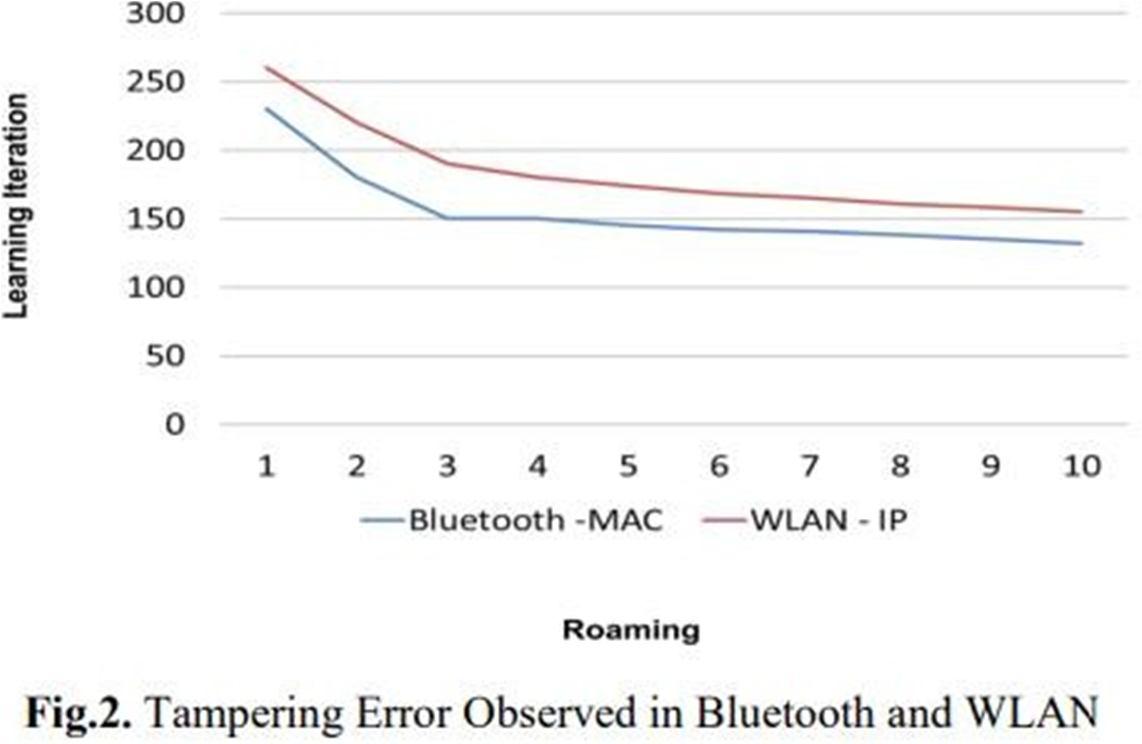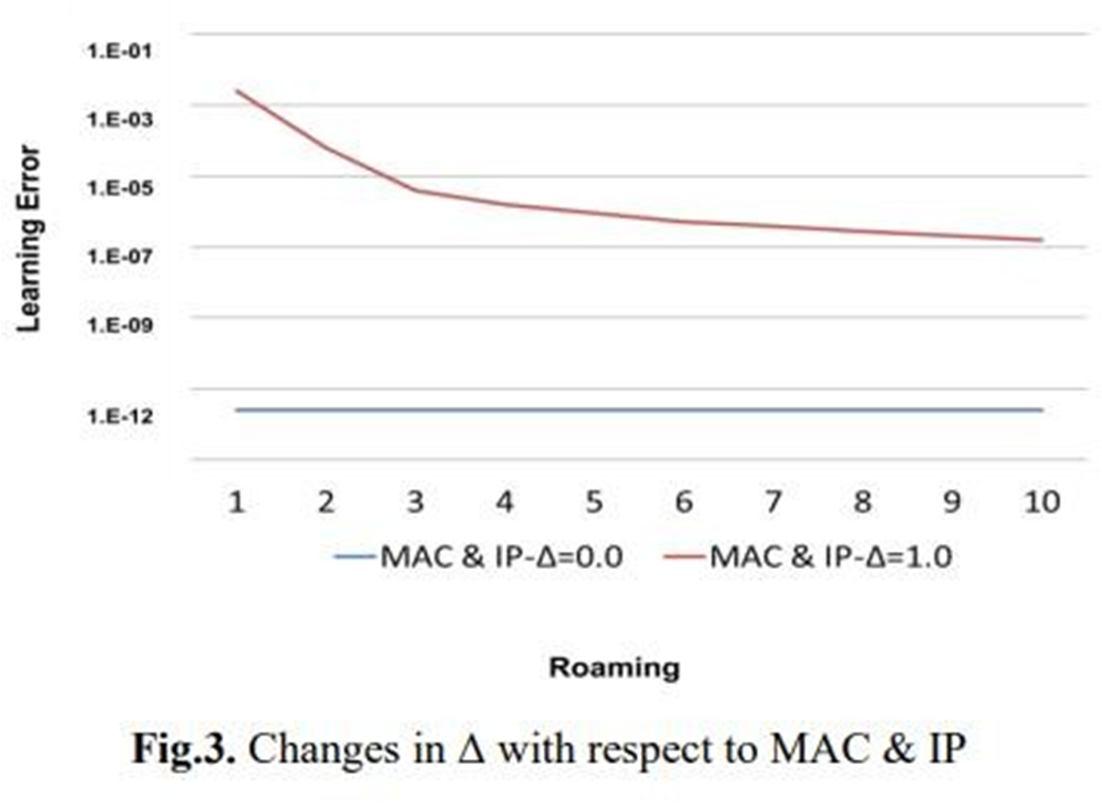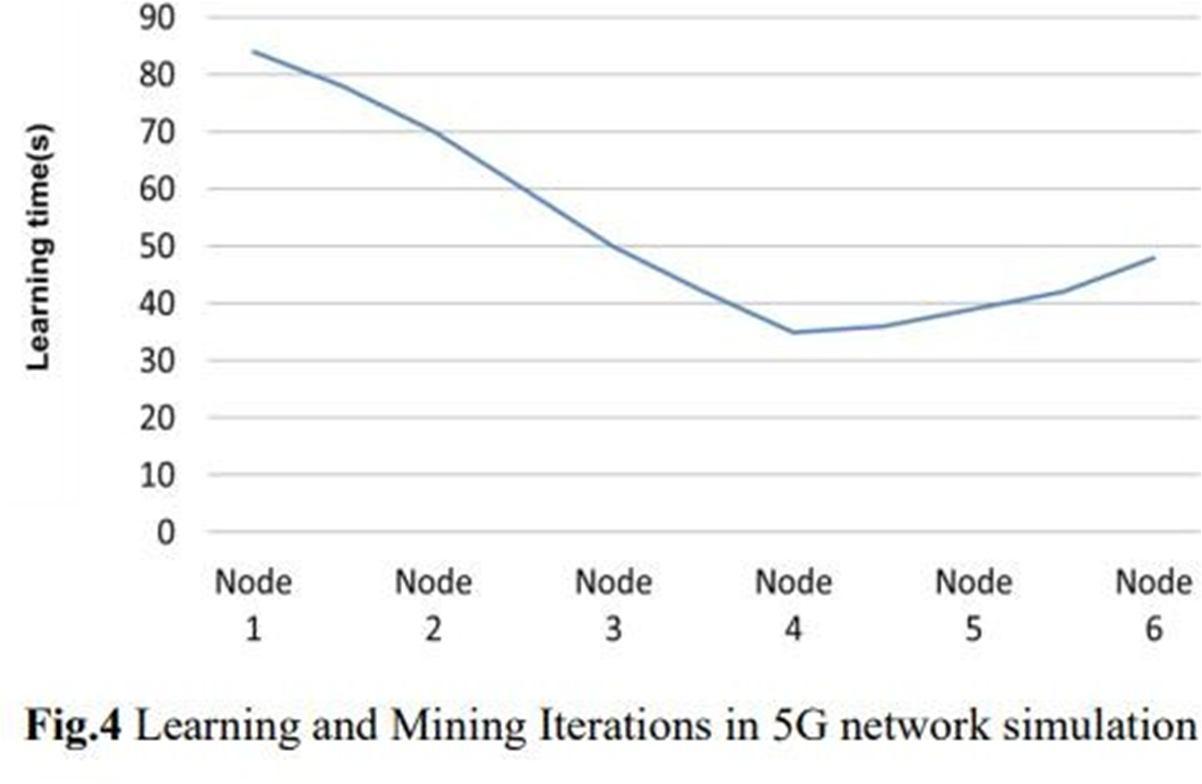
ISSN: 2321 9653; IC Value: 45.98; SJ Impact Factor: 7.538

Volume 10 Issue XI Nov 2022 Available at www.ijraset.com


ISSN: 2321 9653; IC Value: 45.98; SJ Impact Factor: 7.538

Volume 10 Issue XI Nov 2022 Available at www.ijraset.com

Abstract: The speed of internet has increased dramatically with the introduction of 4G and 5G promises an even greater transmission rate with coverage outdoors and indoors in smart cities. This indicates that the introduction of 5G might result in replacing the Wi Fi that is being currently used for applications such as geo location using continuous radio coverage there by initiating the involvement of IoT in all devices that are used. The introduction of WiFi 6 is already underway for applicationsthat work with IoT, smart city applications will still require 5G to provide internet services using Big Data to reduce the requirement of mobile networks and additional private network infrastructure. However, as the network access begins to expand, it also introduces the risk of cyber security with the enhanced connectivity in the networking. Additional digital targets will be given to the cyber attackers and independent services will also be sharing access channel infrastructure between mobile and wireless network. In order to address these issues, we have introduced a random neural network blockchain technology that can be used to strengthen cybersecurity in many applications. Here the identity of the user is maintained as a secret while the information is codified using neural weights. However, when a cyber security breach occurs, the attacker will be easily tracked by mining the confidential identity. Thus a reliable anddecentralized means of authentication method is proposed in this work. The results thus obtained are validated and shows that the introduction of the random neural network using blockchain improves connectivity, decentralized user access and cybersecurity resilience.
Keywords: Smart cities, 5G, Internet of Things, Blockchain, Random Neural Network.
Smart Cities have become a general norm of usage as their implementation inthe society increases to meet the different user requirements and needs. The functionality of a typical smart city should be such that they are always ready to be used. Though the development in technology has facilitated many human to machine,machine to machine and human to human combinations in terms of applications and services, unique smart city drivers are yet to be invented. The internet of things forms the backbone of a smart city, with big data processing and exchange, servers and sensors and interconnected system of devices. In IoT, the physical values can be sensed while virtual information can be detected and converted to a digital form such that can be integrated with a transmitter to travelover a wireless or wired medium of network communication . The evolution of communication protocols, transmission networks, decentralization, edge computing and cloud computing has resulted in the introduction of IoT. The implementation of IoT in smart cities has opened the gateway to an array of applications for higher levelservices and intelligent decision making. This introduction of IoT has resulted in a number of advantages such as maintenance, energy usage and assets. Hence 5G will prove to be a novel solution apt for smart cities that require large MIMO antennas, device densities, extreme node density, great bandwidth and high carrier frequency. Some of the areas in which 5G finds its applications are massive machine type communications, ultra reliable low latency communications and enhanced mobile broadband. Moreover, 5G will also prove to be very integrative by connecting the spectrum and air interface of 5G with Wi Fi and LTE, enabling cost efficient, easily available, scalable, reliable and global connectivity solutions providing seamless user experience and high coverage. These characteristics of 5G have driven the internet towards expanding into smart cities. However, when using in smart cities, there are some extra features that need to be involved such as an improvement in the Quality ofService, low latency and high data rate. Intelligence and flexibility of the 5G needs tobe increased to improve capacity of the node and further improve cost and energy efficiency. The use of Big Data with IoT in smart cities will ensure that the citizens make informed decisions with data correlations and data analytics. As the number of smart devices that we are using increases steadily, IoT remains the key source of enabling proper management and establishment of monitoring, managing and controlling the smart devices, keeping track of and analyzing large volumes of datausing big data and incorporating key insights into Smart City Users. A number of problems related to information prediction in mobile phone, energy optimization, proactive maintenance and asset maintenance becomes easier when Big data is involved.
ISSN: 2321 9653; IC Value: 45.98; SJ Impact Factor: 7.538 Volume 10 Issue XI Nov 2022 Available at www.ijraset.com

A number of applications have introduced for smart city uses blockchain technology to improve the security framework in smart devices. This introduction is through the use of actuators and sensors in a physical layer to transmit data and gatherdata to be sent to the next protocol layer. Bluetooth, Ethernet, 5G and 4G are the different data transmission methods that are possible in the communications layers where it is possible to incorporate blockchain protocols, to enhance privacy and security of the data. A distributed ledger is present in the database layer which is used to save the information from the physical layer. This information can be classed as either private,or public and permissioned or permission less. There are many smart applications forthis interface layer like smart health, smart home and smart parking, integrated with one another to formulate sound decisions. Many layers can also be used to establish an intelligent transport system working on the basis of blockchain. The application layer encompasses the packaging services and applications like logistics and ride sharing. The contract layer is built with smart contracts, algorithms and scripts that are self enforcing, self executing and self verifying. The static data that is saved in the blockchain is used to activate this layer. Theincentive layer incorporates the block chains with the economic reward such that allocation methods and issuance are specified. The proof of movement, proof of stakeand proof of work come under the agreement algorithm in the consensus layer.
Distributed peer to peer verification, data forwarding and networking are involved inthe network layer. The data layer shows the chained data blocks while the physical layer comprises of the different field assets of the solution. Similarly, it will also include Merkle trees, hash algorithms, time stamping, asymmetric encryptiontechniques that are used in Blockchain analysis. 5G will find its place in a number of applications such as cloud service providers and tenants, infrastructure, mobile network operators and various other stakeholders. The interconnection of standalone IoT systems using the 5G networks or internet will lead to a number of cyber security challenges, resulting in exposure of sensitive information . As the use of 5G increases, mobile edge computing and fog computing will play a crucial role in self network management, data analytics and decentralized applications. Hence deep learning techniques are introduced as a solution for cyber security issues in 5G to trace network anomalies. In Intrusion Detection system and Web security domain, a mobile cloud computing based wireless network that uses 5Gto mitigate threats are commonly implemented.


Randomized Neural Networks explore the behavior of neural systems where the majority of connections are fixed, either in a stochastic or a deterministic fashion.Typical examples of such systems consist of multi layered neural network architectures where the connections to the hidden layer(s) are left untrained after initialization. Limiting the training algorithms to operate on a reduced set of weights inherently characterizes the class of Randomized Neural Networks with a number of intriguing features. Among them, the extreme efficiency of the resulting learning processes is undoubtedly a striking advantage with respect to fully trained architectures.
ISSN: 2321 9653; IC Value: 45.98; SJ Impact Factor: 7.538 Volume 10 Issue XI Nov 2022 Available at www.ijraset.com

Using the learning algorithm, we can find the tampering effect on the neural block chain. It will reduced the rate of error, by observing the differences at a change of Δ=1. Here both the networks are observed at the same phase using varying valuesin steps of unity. Fig.2 shows the Bluetooth and WAN simulation for determining the tampering error while Fig.3 indicates the difference in MAC & IP for value of 0 and 1for Δ.


The hidden layer holds four neurons with learning progressing in a continuous manner. Fig.4 shows the simulation for 5G nodes activated. It is observed that due to random values uses, the mining iteration is not as expected.
The proposed work is the implementation of random neural network in 5G andIoT for smart cities where as the data validation of the users increases, the neuronswill also gradually increase. A 5G node authentication process is incorporated and theobserved results indicated that in order to aptly build a neural network that supports smart city infrastructure, mining should take place in a gradual manner in a decentralized network with encrypted data. Moreover, results can also be validated using cyber attackers or rogue users can be identified and detected. Future research in this methodology could include using the proposed methodology in other neuralnetworks in order to compare and contrast the results of mining. The authentication stages and Roaming stages will be able to determine the mining effect and a proper balance needs to be struck between the user data as well as thenumber of neurons

